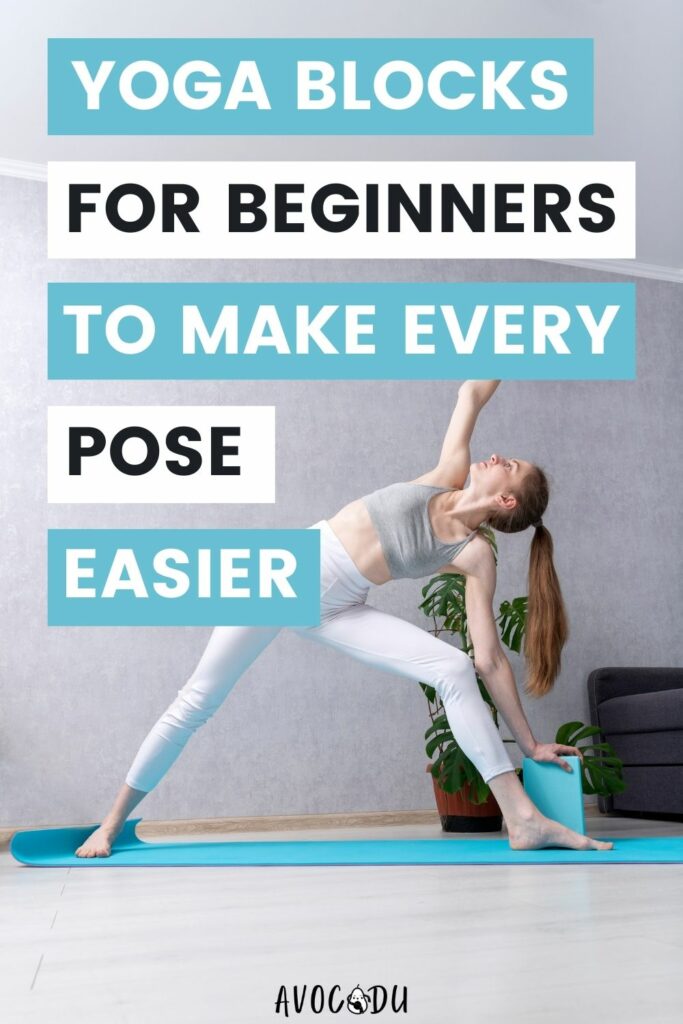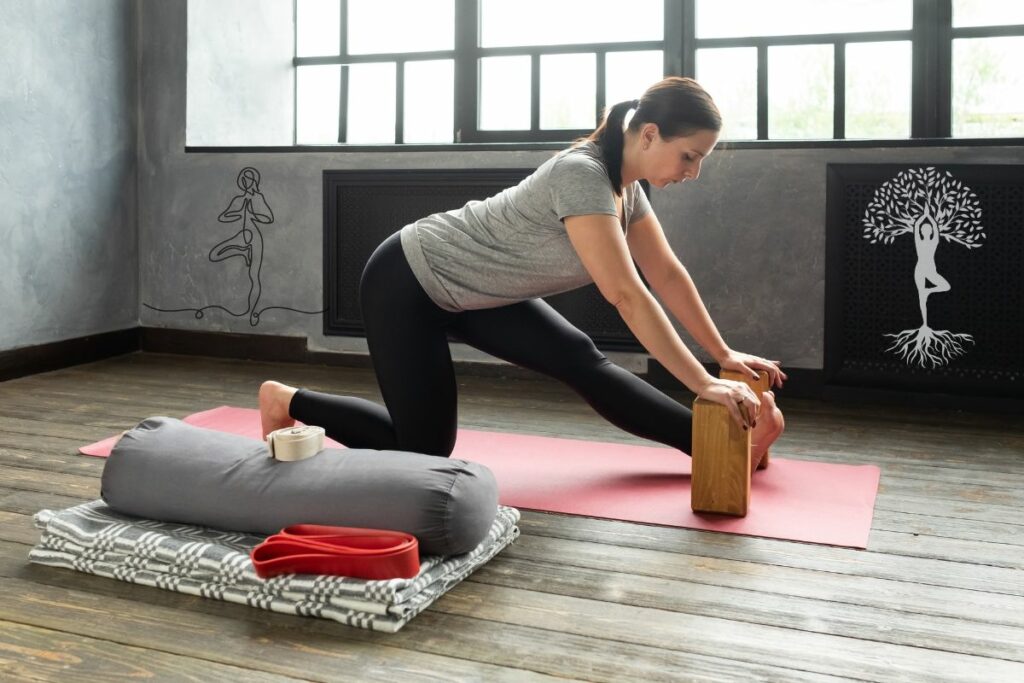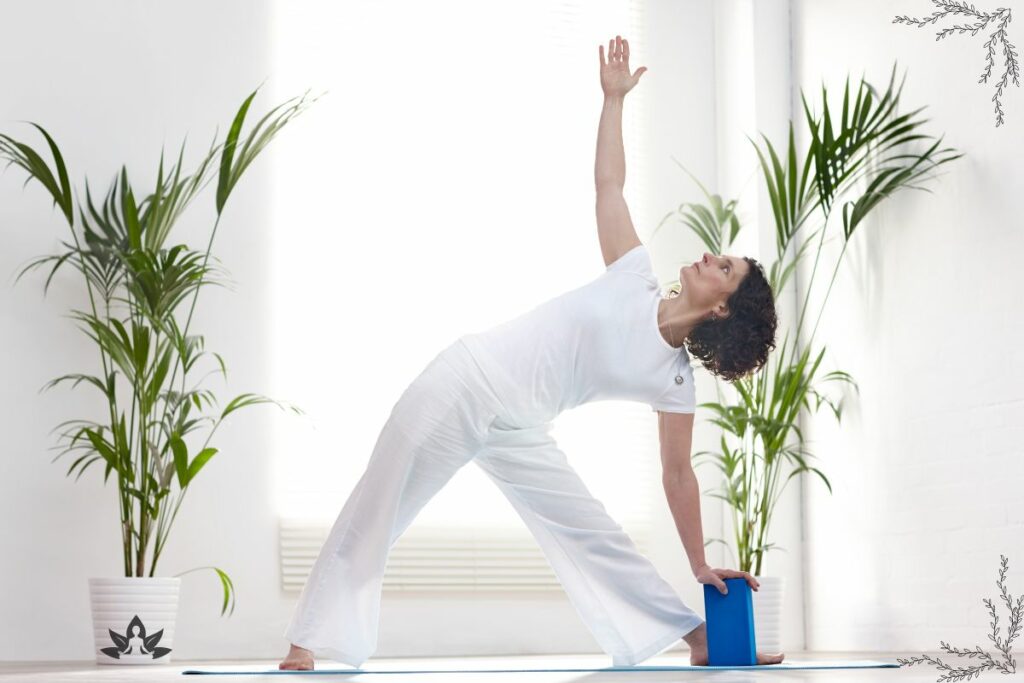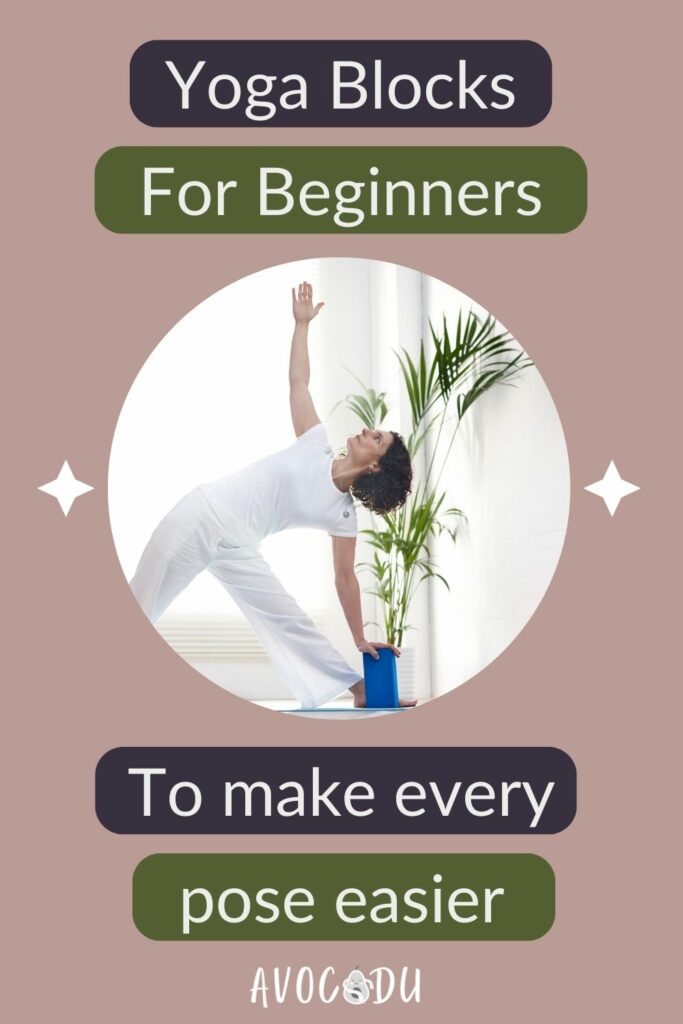Yoga Blocks for Beginners to Make Every Pose Easier
Have you ever found yourself struggling to hold a yoga pose, feeling like your body just isn’t ready for the challenge? You’re not alone!
Many beginners face this frustration when starting out, as some poses can feel nearly impossible without the right flexibility or strength.
This is where yoga blocks for beginners come in—they are an essential tool for modifying poses, enhancing alignment, and providing the support needed to build confidence.
By using yoga blocks, you can gradually ease into your practice, making each pose more comfortable and achievable.
Whether you’re a newbie or looking to refine your skills, yoga blocks can help you find balance and ease in every movement.

This post may contain affiliate links, which helps keep this content free. Please read our disclosure for more info.
What Are Yoga Blocks and Why Should You Use Them?
Yoga blocks are powerful props that can greatly enhance your yoga practice, especially if you’re just starting out. Made from foam, cork, or wood, they come in various sizes and densities, allowing you to choose what best fits your comfort and needs.
The main function of yoga blocks is to bring the floor closer to you, providing the stability and support needed when you’re building strength and flexibility.
For beginners, yoga blocks are essential tools. They act as extensions of your arms or legs, making difficult poses more accessible and allowing you to maintain proper alignment, which is crucial for preventing injuries.
For example, if a pose requires touching the floor but you can’t reach, a yoga block helps you achieve the pose without straining your body.
Yoga blocks are also great for enhancing stretches and improving balance. They offer a controlled way to deepen stretches, allowing your muscles to lengthen gradually without pushing too hard.
In balancing poses, blocks can provide the support needed to maintain stability, helping you focus on alignment rather than struggling to stay upright.
Whether you’re looking to ease into poses or explore new challenges, yoga blocks provide the support and versatility to safely grow your practice, making them a must-have for any beginner.
How to Use Yoga Blocks for Beginners

Yoga blocks are simple to use and can make a significant difference in your practice, especially if you’re just starting out. The key is to position the blocks where they can best support your body, helping you maintain proper alignment and reducing the risk of strain or injury.
Here are some ways beginners can use yoga blocks:
Support Your Hands or Feet: When your hands or feet can’t quite reach the floor, yoga blocks can bring the ground closer to you. This support helps reduce strain and maintain proper alignment, allowing you to fully engage in the pose without overextending or compromising your form.
Elevate Your Hips: Sitting on a yoga block can provide elevation in seated poses, making it easier to keep your spine straight and your hips open. This adjustment can greatly improve comfort and posture, especially for those who find it difficult to sit on the floor for extended periods.
Assist Your Back: Placing a block under your back or hips can provide gentle support in various poses, allowing you to relax more deeply without stressing your muscles. This added support can help you hold poses longer and with greater ease, making it easier to focus on your breath and alignment.
Modify Standing Poses: Yoga blocks can help you modify standing poses to suit your level of flexibility and strength. By providing a stable surface to reach for or lean on, blocks can help you maintain balance and proper form, ensuring a safer and more effective practice.
Enhance Balance: For balance poses, using blocks can give you a stable foundation, boosting your confidence and allowing you to build strength gradually. This stability is especially helpful when you’re learning new poses or working on improving your balance over time.
Facilitate Relaxation: In restorative yoga, blocks can be used to support the body in comfortable positions that encourage relaxation and release tension. By providing support and elevating certain parts of the body, blocks make it easier to relax fully and reap the benefits of restorative poses.
By using yoga blocks in these ways, you can tailor your practice to better meet your needs, making each pose more accessible and enjoyable. This support not only helps you progress safely but also enhances your overall yoga experience.
Yoga Blocks Exercises for Beginners

Yoga blocks can be a fantastic addition to your practice, especially for beginners looking to build strength, flexibility, and balance in a safe and supportive way.
Here are some yoga blocks exercises for beginners that can help you ease into poses, improve alignment, and enhance your overall yoga experience:
1. Supported Bridge Pose:
Lie on your back with your knees bent and feet flat on the floor, hip-width apart. Place a block under your sacrum for support, allowing your hips to rest on the block. This variation helps to open the chest and stretch the spine with less strain, providing a gentle backbend that strengthens the lower back and glutes while relieving tension in the front body.
2. Half Splits Pose:
Begin in a kneeling position with one leg extended straight in front of you. Place blocks under your hands to provide support and help maintain balance as you lean forward over the extended leg. This pose stretches the hamstrings and calves while allowing you to keep proper alignment in the hips and spine, making it accessible even if you’re not very flexible yet.
3. Seated Forward Fold:
Sit with your legs extended straight in front of you, feet flexed. Place a block in front of your legs and rest your hands or forehead on it, which helps you keep a straight spine and prevents rounding your back. This exercise gently stretches the hamstrings and lower back, promoting relaxation and flexibility without forcing your body into discomfort.
4. Reclined Bound Angle Pose with Blocks:
Lie on your back with the soles of your feet together and knees falling open to the sides. Place a block under each knee for support. This pose helps to gently open the hips and stretch the inner thighs, while the blocks prevent overextension and provide a soothing stretch that promotes relaxation.
5. Modified Triangle Pose:
Stand with your feet wide apart and turn your front foot out while keeping the back foot at a slight angle. Place a block on the floor next to your front foot and rest your hand on the block as you extend the other arm up towards the sky. This variation allows you to focus on opening your chest and maintaining a straight spine without straining to reach the floor, making it easier to work on balance and flexibility.
6. Lizard Pose with Blocks:
From a low lunge position, place your hands on blocks on either side of your front foot. Lower your hips gently towards the ground while keeping your back leg straight. Using the blocks helps you maintain balance and alignment, making it easier to stretch the hip flexors and inner thighs while building strength in the legs.
7. Chair Pose with Blocks:
Stand with your feet hip-width apart and place a block between your thighs. As you bend your knees and lower into a chair pose, squeeze the block with your thighs to engage your inner thighs and core muscles. This exercise not only helps to build strength in the legs and core but also encourages proper alignment of the knees and hips.
8. Supported Fish Pose:
Sit on the floor with your legs extended and place a block at the base of your shoulder blades and another block under your head. Gently lean back onto the blocks, allowing your chest to open and shoulders to relax. This restorative pose stretches the chest, shoulders, and throat while providing gentle support to the spine, making it a great way to counteract forward-leaning postures and relieve tension.
These yoga block exercises offer a range of benefits, from enhancing flexibility and balance to building strength and improving alignment. By incorporating blocks into your practice, you can find the support you need to safely explore each pose, making yoga accessible and enjoyable as you develop your skills and confidence.
Tips for Incorporating Yoga Blocks into Your Routine

Ready to give yoga blocks a try? Integrating them into your practice can help you gain confidence and enhance your yoga experience. Here are some practical tips for incorporating yoga blocks into your routine:
1. Start with Familiar Poses:
Begin by using yoga blocks in poses you already know well. This allows you to focus on the added support without the distraction of learning a new pose. For example, try using blocks in poses like Downward Facing Dog, Forward Fold, or Child’s Pose. These poses are commonly practiced and easy to modify with the use of blocks, helping you to gradually get comfortable with the props.
2. Experiment with Different Positions and Heights:
Yoga blocks have three different height settings—flat, medium, and tall. Try using the block at various heights to find what feels best for your body in different poses. For instance, in a standing forward bend, you might find that using the block at its tallest height provides the support you need to maintain a flat back, while using it at a lower height challenges your flexibility. Adjusting the block’s height can also help you ease deeper into a stretch or maintain better alignment.
3. Listen to Your Body:
Yoga is all about tuning into your body’s needs and finding your personal flow. Don’t feel pressured to use blocks in every pose or push yourself beyond your comfort zone. Use blocks when you need extra support or to explore a new range of motion, but don’t hesitate to set them aside when you feel stable and balanced without them. The goal is to use blocks as tools to enhance your practice, not as crutches that you become overly reliant on.
4. Integrate Blocks into Balance Poses:
Blocks are excellent for helping with balance and stability, especially in poses where you’re still building strength and coordination. Try using a block under your hand in balancing poses like Half Moon or Extended Side Angle to provide a stable foundation while you work on alignment and core engagement. This can make it easier to hold the pose for longer and focus on building strength without the fear of falling.
5. Use Blocks for Restorative Poses:
Incorporating blocks into restorative yoga poses can help you achieve deeper relaxation and release. Use blocks to support your body in poses like Supported Bridge or Reclined Bound Angle Pose, allowing you to stay in the pose for a longer period without discomfort. This is particularly beneficial if you’re looking to enhance relaxation and reduce stress in your practice.
6. Build a Home Practice Around Yoga Blocks:
If you practice yoga at home, make yoga blocks a part of your regular routine. Keep them within reach and use them as needed throughout your session. You might find that certain days you need more support or stability, while on other days, you’re ready to challenge yourself more. Having blocks readily available encourages you to experiment and listen to what your body needs each day.
7. Practice with Intention:
Whenever you use yoga blocks, do so with the intention of understanding your body better and progressing in your practice. Focus on how the blocks change your alignment, balance, or stretch, and use this awareness to deepen your understanding of each pose. This mindful approach helps you learn how to adjust your practice to your body’s needs, fostering growth and development over time.
By starting with these tips, you can make yoga blocks a natural part of your practice, enhancing your experience and helping you build a strong foundation in yoga.
Enhance Your Practice with Yoga Blocks for a More Rewarding Experience
Yoga blocks are an incredible tool for any practice, especially for beginners looking to make poses more accessible. They offer the support needed to maintain proper alignment, gradually build strength, and improve flexibility without risking strain or injury.
By integrating yoga blocks into your routine, you can confidently explore new poses and deepen your stretches, making your practice more enjoyable and effective.
If you’re ready to take your practice even further and explore how yoga can help you achieve your fitness goals, check out the Yoga Fat Loss Bible by Avocadu.

This comprehensive program combines yoga routines designed to burn fat, improve flexibility, and build strength—all while promoting overall wellness.
It’s perfect for those looking to enhance their yoga practice and achieve a healthier lifestyle. Dive in today and discover the transformative power of yoga!

